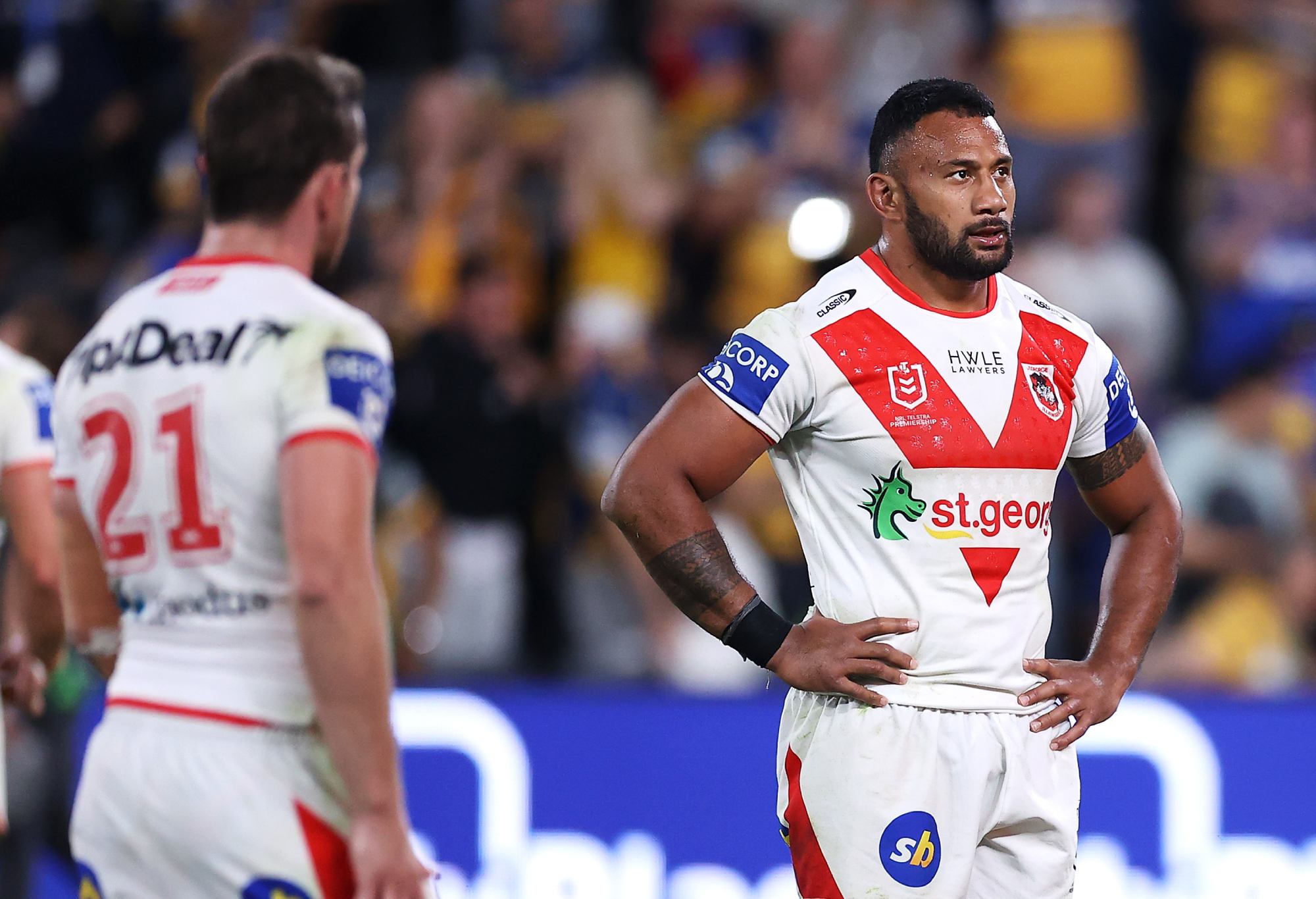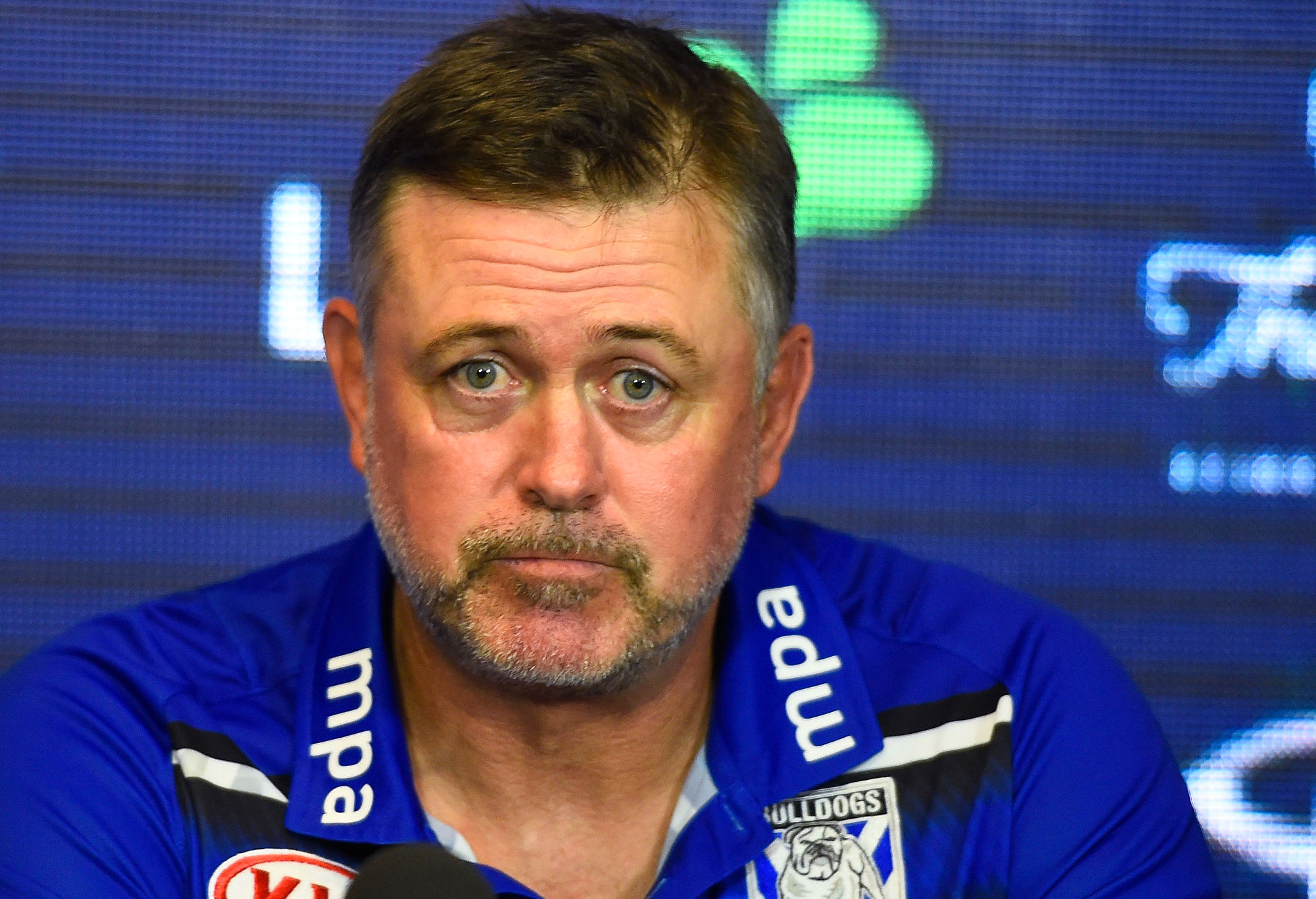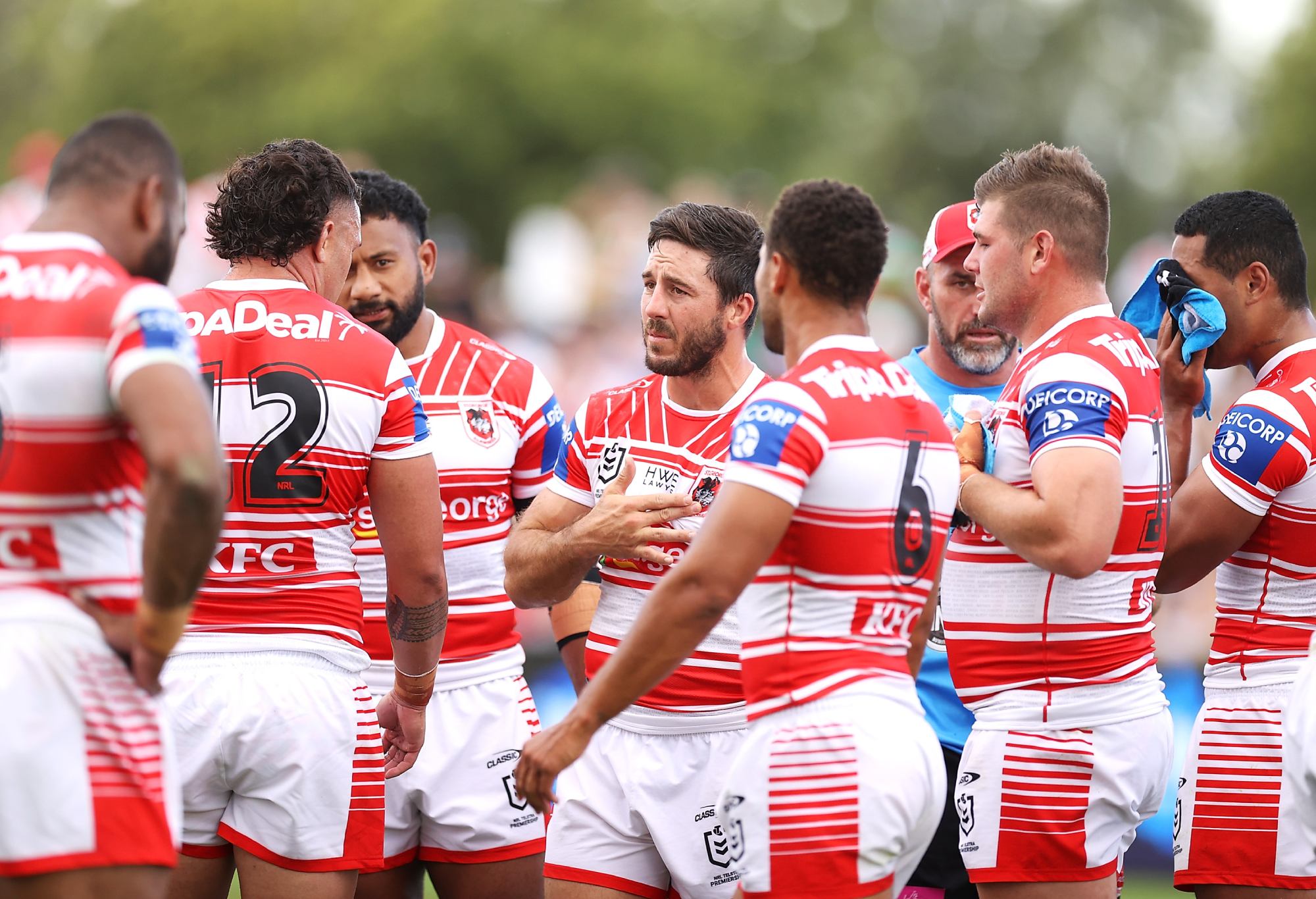There was a point in the second half of the Dragons’ loss to the Sharks last Sunday evening, with 15 minutes to play, where a very peculiar statistical pattern was evident.
At that stage, the Dragons had completed at 83% and enjoyed, according to the possession data, around half of the ball. They had taken roughly a third more tackles in their opponents’ 20m zone.
Yet they were losing the yardage by over 250m, had created two line breaks to their opponent’s nine and, as most people will remember, were getting thrashed. It was then 32-8 and would end at 40-8, the biggest blowout of the year so far.
There are many occasions where numbers fail to give the nuance of the game, but this wasn’t one of them.
The eye test backed up the numbers: St George Illawarra had plenty of ball and plenty of field possession but had done next to nothing with the footy that they got, whereas Cronulla had thrown everything at the defence when they had their chance.
This isn’t new. Here’s some quick numbers across the admittedly small sample size of 2023 so far, equalised for minutes played.
The Dragons have the fewest passes, by a distance.
They have the lowest number of runs, by a distance.
They have the lowest number of ball touches, by a distance.
They have the lowest number of total sets, by a distance.

(Photo by Mark Kolbe/Getty Images)
Congratulations if you can see the theme emerging here. The Dragons don’t get any ball and when they do get it, they don’t do anything with it.
But that’s not the whole story. They do get the ball, with around 49% of the share of time in possession across their games, which is perfectly fine. They complete at 79% when they get it, well above average.
The combination of a high completion rate, a decent time in possession and the long list of failings points to one very specific problem: the Dragons are the slowest team in the NRL.
Their average set loop this year has been 134 seconds long, the worst in 2023 and, indeed, seven seconds longer than the worst of 2022 (Wests Tigers) as well.
The loop is the time it takes for them to get the ball, go through their motions, kick it away and then have the other team have their set before getting it back.
Club analysts will have access to their own side’s individual set times, but the rest of us don’t. Set loop times are really useful as they’re pretty easily worked out from the public data and they can be used to tell you which teams are fast and slow comparatively to the other teams.
Over a league-wide sample, the other aspects of the loop – breaks in play, the opposition speed among others – can be held as a constant because every other team faces every other team, thus one side’s difference in speed can be assumed to be their own doing.
In this case, either the Dragons played three sides who are incredibly slow in possession (they haven’t) or they are forcing the other team to attack slowly (they aren’t) or they are taking ages to get through their time with the ball.
In 2023, Manly are down at 109 seconds per loop, racing through their work and scoring plenty of points in the process, while in 2022, the fastest were the Sharks, Panthers, Bunnies, Roosters, Cowboys and Eels in that order. Notice a theme?
Across a larger sample size, 120 seconds per loop is about average and 115 seconds or lower is very good. St George Illawarra are 14 seconds off average and if you extrapolate that over the average sets per game – around 40 per team in 2022, 39 so far in 2023 – and you’re looking at a lot of extra tackling per game generated simply by how slowly they go about their business.
CLICK HERE for a seven-day free trial for your favourite sport on KAYO
Anthony Griffin, at least for now still the coach at St George Illawarra, has long prioritised completing sets, but from the numbers, it’s clear to see he has done so at the expense of creativity.
It should not be surprising at this point to read that completion rates aren’t really a good way of looking at who did well in a rugby league match.
Many articles have been written on the subject, but the summation is that, above a floor of around 73%, it really doesn’t matter that much how high you complete.
Obviously certain game states – consolidating a lead late in the game, for example – benefit from playing as clean as possible, but mostly, it’s a balance between ball security and trying to score points. Clearly, Griffin has that aspect wrong.
The current average completion rate for 2023 is 77.4%, split between 79.4% for winners and 75.4% for losers. The Dragons, remember, are currently completing at 79%, but have been thrashed twice in two weeks.
There is some utility in trying to complete at around 80% or higher but if that comes at the expense of endeavour, it’s not worth it. This is the Dean Pay/Trent Barrett Bulldogs zone.

Dean Pay (Photo by Ian Hitchcock/Getty Images)
Compare and contrast with total sets, which is simply the count of how many sets a team has. On Sunday night, Cronulla had 47 total sets to 34 from the Dragons.
Simply put, the number of sets in possession is far more relevant than how you complete those sets, rewarding teams who get through their work faster. On Sunday, the Sharks had 13 more sets, 13 more chances to score, 13 more repeat effort bouts for the Dragons.
This is the Dragons’ paradox. By playing slowly, they make themselves easier to defend and ensure the opposition has energy to attack, but they don’t want to play faster lest they make errors. Either way, the other side gets the ball back and it starts over again.
There’s a way around this. Instead of aiming for the 80% completion rate, they might well do better to aim for 41 sets.
At that mark in 2022, 43% of teams won, a number that goes up precipitously the more sets you have. Merely having more sets than your opponent results in a win 69% of the time.
The average sets per game for the Dragons in 2022 was 39.46, almost bang on the league average of 40. This year so far, it’s down to 35. Throw in that they’ve been among the worst for sets per try over a much longer period and you have a big problem.
With Griffin now having to reapply for his job, this is a major issue. His style is to play like this, and it patently isn’t working.
He doesn’t want his players to take risks. Moses Suli, who was generally seen as one of their better players in 2022, had a pass per run ratio of just 0.19 last year, almost half of the average centre. Tariq Sims made six passes all year.

Ben Hunt speaks to his team during the Charity Shield thumping in Mudgee. (Photo by Mark Kolbe/Getty Images)
The Dragons actually make a lot of passes as a team, but it’s all safety first, side to side, no threat.
Ben Hunt topped the NRL in line engaged runs last year but after him, it’s Jack de Belin in 47th, Junior Amone in 53rd and Jack Bird in 70th.
Hunt was responsible for over half of their line engagements last year. He topped the comp for Creativity Value – an advanced stat that measures total offensive output – but was in the bottom quartile of NRL halfbacks when adjusted for possession.
If you ever wanted to see a stat that replicated how the Dragons’ offensive strategy was ‘give it to Dozer’, that is it. They’ve got a truly elite half but reduce his ability to affect games by giving him so much to do.
There are ways that this can be changed. First up would be for Zac Lomax to start pulling his weight, and for Junior Amone to come back into the team and actually take on the line for a change.
Second would be to get more footy into the hands of Tyrell Sloan, who is the reverse Ben Hunt in terms of Creativity Value: his volume numbers are awful, but adjusted for possession, excellent.
Third would be to find a 9 who can take the burden off Hunt, because that remains a gaping hole in the spine.
But fourth, and most important, would be for the coach to give his side some freedom to actually play.
Sims and Suli didn’t forget how to pass overnight, they did it when Hook told them to stop passing. All the Illawarra Steelers juniors that are now in first grade won an SG Ball comp by attacking as well as defending.
If Griffin wants to reapply for his job seriously, he has to show that something different will happen if he gets another year. Playing some footy would be a start.































































































